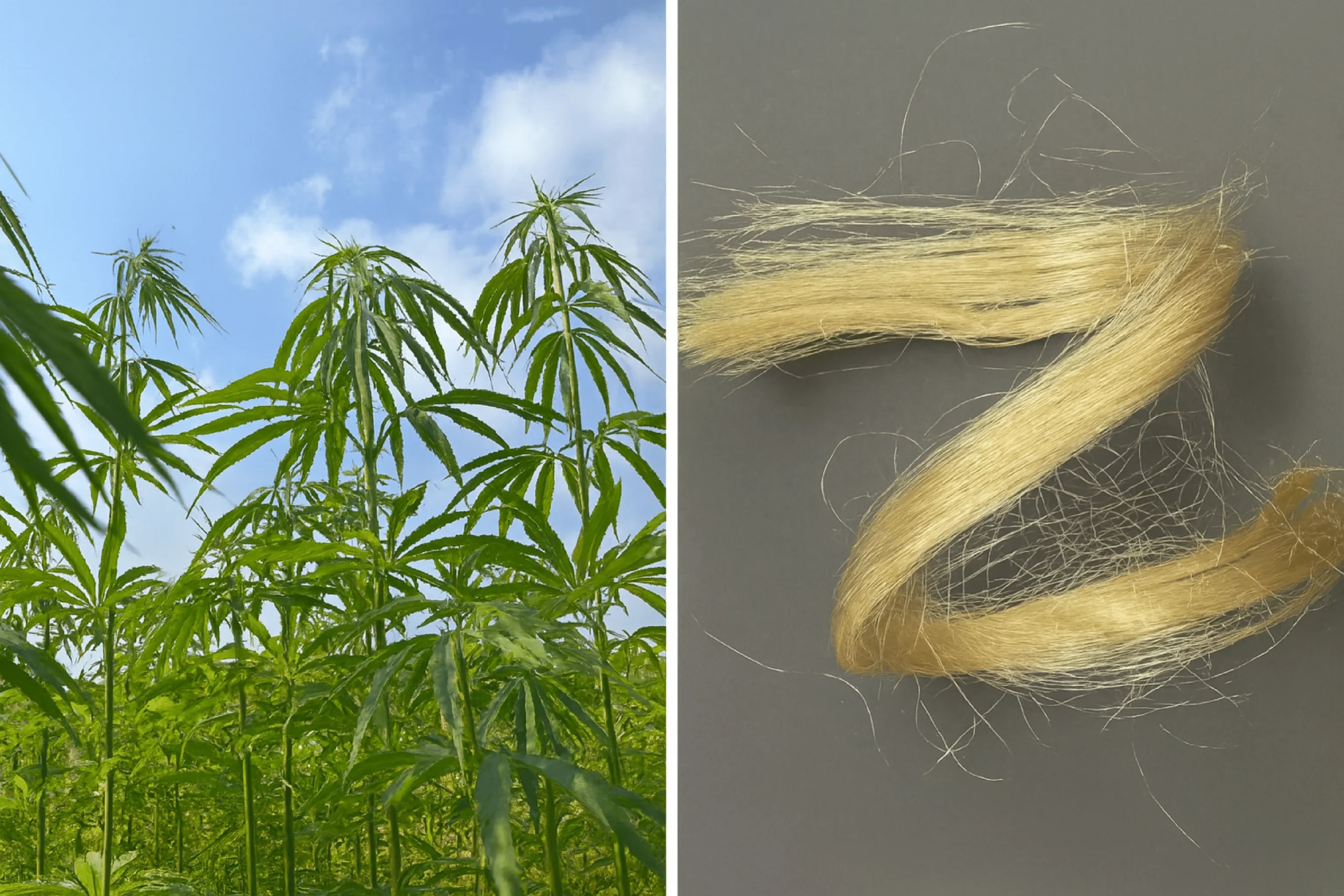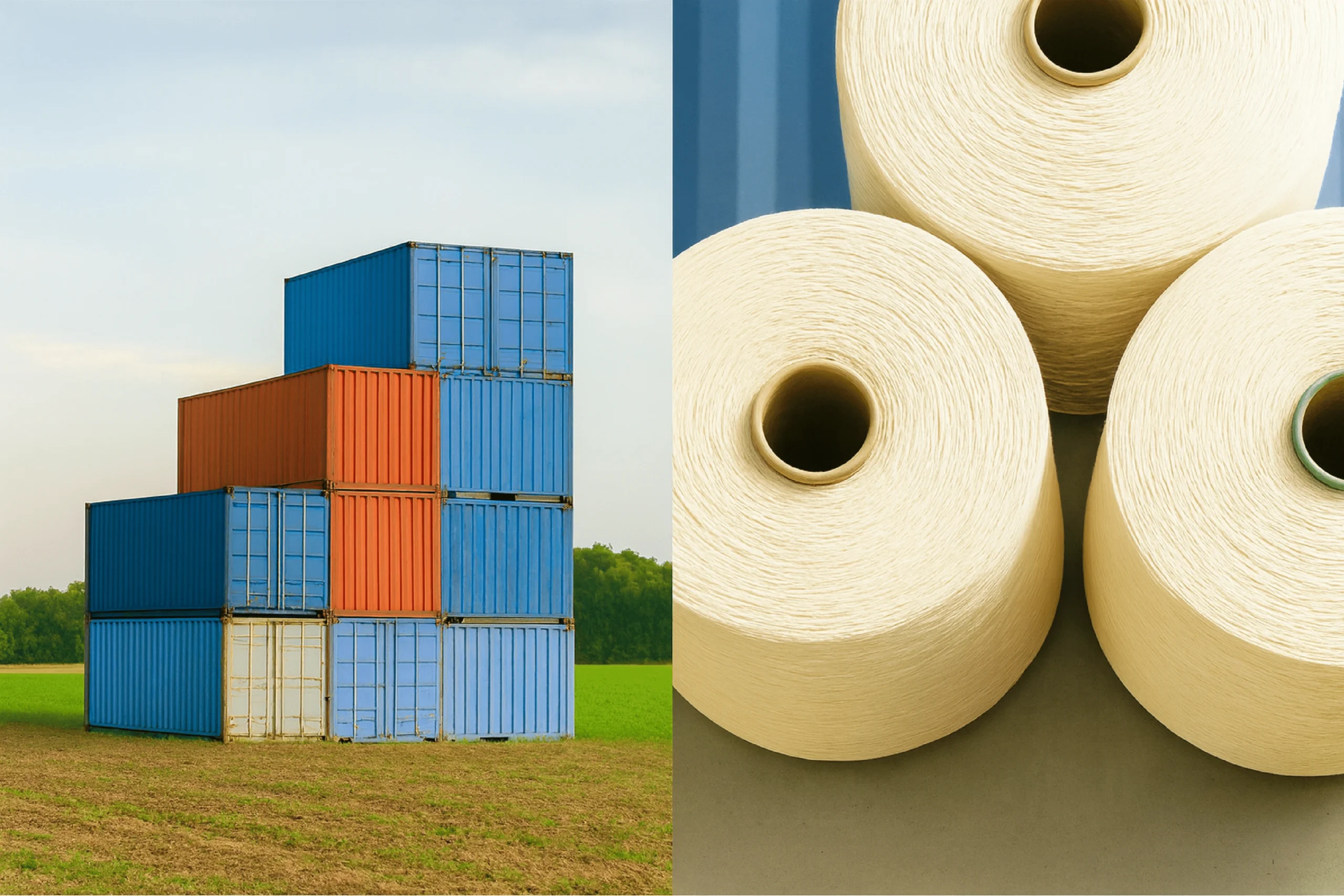The future of textiles lies in next-generation fibers that combine performance, scalability, and sustainability. One of the most promising innovations is hemp-based lyocell, a biodegradable textile alternative that outperforms cotton and reduces dependence on fossil fuel–based synthetics. This article explains what lyocell is, why hemp is the ideal feedstock, and how Zylotex is transforming Canadian hemp straw into ZyloPulp™ dissolving pulp and ZyloTex™ fibers. Together, these innovations deliver low-carbon fabrics and a resilient closed-loop fiber production system that can scale globally.
The Promise of Lyocell
When lyocell first emerged in the 1990s, it was hailed as a breakthrough in sustainable textiles. Unlike viscose, which relies on harsh chemicals like carbon disulfide, lyocell uses a closed-loop process in which more than 99% of the solvent is recovered and reused.
The resulting fiber has quickly earned a reputation as a “premium” material:
- Soft and comfortable, like cotton but smoother.
- Strong and durable, suitable for apparel, nonwovens, and technical applications.
- Breathable and moisture-wicking, making it ideal for sportswear and everyday wear.
- Biodegradable, breaking down naturally at the end of its life cycle.
Global brands embraced lyocell under labels like TENCEL™, using it for everything from fashion to baby wipes. But until now, lyocell has been made almost exclusively from wood pulp.
Why Hemp Is the Ideal Feedstock
Hemp is one of humanity’s oldest crops, but in the 21st century, it may become our most forward-looking. As a feedstock for textiles, hemp offers unique advantages:
- Agronomic efficiency: Hemp grows quickly, requires little water compared to cotton, and thrives without heavy pesticide use.
- Carbon sequestration: A hectare of hemp can capture up to 15 tonnes of CO₂, making it one of the most effective carbon sinks among crops.
- Soil health: Hemp roots reduce erosion, improve soil structure, and support regenerative agriculture.
- Byproduct abundance: Most hemp in Canada is grown for grain or nutraceuticals. After harvest, the straw is often left in fields. This creates an untapped supply of millions of tonnes of fiber-rich material.
By using this underutilized straw to make textiles, Zylotex not only reduces waste but also creates new value streams for farmers.
Marrying Hemp and Lyocell: The Zylotex Breakthrough
At Zylotex, we asked a simple question: What if the most sustainable crop could fuel the most sustainable fiber process?
The answer is our proprietary two-part innovation:
- ZyloPulp™: A dissolving pulp engineered specifically from hemp straw, optimized for lyocell spinning.
- ZyloTex™ fibers: High-performance hemp lyocell fibers that rival, and often surpass, cotton and synthetics in comfort, strength, and sustainability.
This is not a lab curiosity. It is an industrial pathway that takes an abundant agricultural byproduct and transforms it into a scalable, premium fiber.
Performance That Competes With the Best
For brands, sustainability is important, but performance is non-negotiable. ZyloTex™ delivers on both fronts:
- Softness & comfort: Comparable to cotton, but smoother to the touch.
- Strength & durability: Stronger than many natural fibers, making it versatile for apparel and nonwovens.
- Moisture management: Naturally breathable and moisture-wicking, ideal for activewear and absorbent nonwovens.
- Biodegradability: Fully compostable, unlike synthetic fabrics that persist as microplastics.
This combination makes hemp lyocell a direct substitute for cotton in woven, knit and nonwoven textiles, while also replacing polyester and nylon in applications where biodegradability is valued.
Closing the Cotton Gap
As explored in Part 1, cotton is under strain and cannot sustainably meet rising global demand. Hemp lyocell steps in as a cotton alternative that:
- Requires less land and water.
- Avoids pesticide-heavy cultivation.
- Can be produced from an agricultural byproduct rather than primary cropland.
For brands struggling with cotton supply volatility, ZyloTex™ offers both stability and sustainability.
Replacing Synthetics Without Sacrifice
The world is also waking up to the reality that synthetics must be phased down. But simply eliminating polyester isn’t enough. Alternatives must meet the same performance standards.
Hemp lyocell does exactly that:
- Delivers strength and versatility on par with synthetics.
- Eliminates the microplastic problem, as it fully biodegrades.
- Reduces reliance on volatile fossil fuel markets.
For woven, knitted and nonwoven textiles alike, this makes ZyloTex™ an ideal synthetic replacement.
Closing the Loop: The Zylotex Model
Beyond performance, Zylotex builds resiliency into the textile system. By sourcing hemp straw from Canadian farms and converting it locally into pulp and fiber, we create a closed-loop fiber production system:
- Farmers grow hemp for grain or nutraceuticals.
- Straw, once considered waste, is harvested and processed into ZyloPulp™.
- ZyloPulp™ is spun into ZyloTex™ fibers for woven, knit, and nonwoven textiles.
- At end-of-life, the fibers biodegrade — returning safely to the environment.
This is the future of textiles: low-carbon, circular, and resilient.
The Bigger Opportunity
The implications go beyond fabric. Hemp-based lyocell is part of a larger transformation in how we think about feedstocks, supply chains, and industrial resilience. It represents:
- A way for farmers to diversify revenue by selling straw.
- A path for brands to deliver on climate promises without compromising quality.
- An opportunity for Canada to build regional textile infrastructure, reducing reliance on imports.
It is not just a new fiber. It is a blueprint for a sustainable textile economy.
Looking Ahead
In Part 3 of this series, we’ll bring the story full circle: how Zylotex itself is leading this transformation, why our Canadian supply chain model matters, and how brands, farmers, investors, and consumers can be part of the movement.
Want to learn more?
Connect with us to learn more about the future of textiles with ZyloTex.



